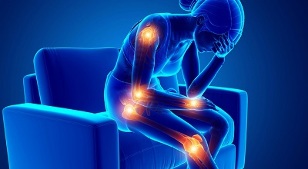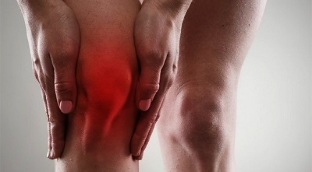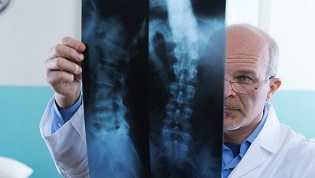The tissues of healthy joints consist of cells capable of recovering from damage - regeneration. Bones, cartilage, synovium and other ingredients can become unhealthy. Dead, damaged cells accumulate in certain tissues. They do not have the ability to divide, which inhibits regeneration. They are difficult to remove, which is the main problem in restoring joint health.
At any physical exertion, strong mechanical stress can damage cells and lead to their death. It is difficult for the sick joint to bear the burden. It is very difficult to cure. To avoid or overcome the disease, it is necessary to understand the defense mechanisms of joint tissues and cells. In the field of joint injuries, arthritis, arthrosis, polyarthritis and other diseases are distinguished. Let's look in detail at the difference between arthritis and osteoarthritis.
First cause of the disease
The joint is protected by neuromuscular cushioning. Thanks to the muscle contraction control system, the shock effect does not occur or is mitigated. The nervous system provides smooth movements and load distribution. In a relaxed state, the muscles also stimulate microvibrations, which leads to the release of lubricant, removal of dead cells.
Impaired neuromuscular attenuation occurs due to poor conduction of nerve pathways. For example, fatigue weakens the defenses of the joint. Dead cells begin to accumulate without having time to separate. The result is inflammation. Weakening of the defense accelerates the breakdown not only of the joints but also of the spine.
A number of factors increase the risk of joint disease, starting with strokes, bruises, overload, hypothermia. Arthritis occurs - an inflammatory process. If it is impossible to cure for months, deformities begin - osteoarthritis.
What is arthritis: causes, symptoms
The reasons for this can be stated:
- Improper food.
- Bad habits: alcohol, smoking. Systemic hypothermia.
- Injuries.
- Excessive stress on the joints.
- Consequences of past illnesses, infections.

The disease is detected by the following symptoms:
- Swelling in the joint area, painful sensations, hypersensitivity, limited mobility (ie synovitis).
- Acute pain when moving and at rest.
- Stiffness in the morning due to swelling at night. An hour after the start of the activity passes.
In addition to the listed symptoms, symptoms of inflammation may appear: weakness, sweating, chills, fever. Some have headaches, weight loss. Concomitant diseases are sometimes observed: the heart and lungs are affected.
What is osteoarthritis: causes and symptoms
As a consequence of progressive arthritis, the symptoms of osteoarthritis in most cases appear only after 40 years.
The disease is characterized by the following manifestations:
- Pain does not appear at rest, but during exercise. Unpleasant sensations appear in the hip or knee joint during walking, using the ladder or exercising. This initial pain may disappear with further movement. There is also a very painful sensation, accompanied by crunching, bending, unfolding.
- Pain when starting to move after a break occurs as a result of deposition on friction surfaces of detritus - products of destruction of cartilage and bone. The sensation may stop after 15 minutes as this precipitate is expelled.
- Dull pain at night occurs as a result of venous congestion.
In osteoarthritis, inflammation often occurs. Along with the painful sensations, swelling is observed (as in arthritis). If there are symptoms of both diseases, arthrosis-arthritis is diagnosed.
The long-term course of osteoarthritis can lead to limited mobility. In the muscles, the tendons begin degenerative changes (contractures) and then deformity. In this case, the diagnosis is made - deforming osteoarthritis or osteoarthritis.
Distinguish the stages of the disease, which are determined by X-rays, as a result of computed tomography:

- 1 degree- slight changes in cartilage, bones. Painful swelling occurs with moderate exercise, decreasing after a period of rest.
- 2nd degree- destruction of cartilage, growth of bone tissue at the edges in the form of osteophytes. Narrowing of the joint space, accompanied by constant pain. Puffiness also becomes stable.
- 3, 4 degrees- extensive destruction of cartilage and bone. The swelling does not disappear, the ligaments and muscles do not work properly and deformation occurs. The load axis is broken in the joint.
Risk factors leading to osteoarthritis are:
- Insufficient mobility.
- Overweight.
- Age factors.
- Infections resulting from insufficient blood and lymph flow, stagnation.
In all situations, the tissues do not have time to recover during the joint destruction process.
Differences between arthritis and osteoarthritis
Both arthritis and osteoarthritis are becoming more common. Diseases affecting the joints have similar names. The differences lie in the nature of the negative changes that occur during the onset and development of symptoms. Arthritis pain is a consequence of tissue inflammation. The synovium is affected, its blood supply, lymph is disrupted, the disease affects the nerve endings. The joint stops eating properly and also fails to produce lubrication. The cartilage suffers.
The disease can be observed not only in adults but also in children (adolescent form). The lesion affects all joints, even small ones, and can affect several of them (polyarthritis).
Osteoarthritis occurs as a result of a prolonged course of arthritis. The cartilage and the whole joint do not receive food from the synovial fluid (lubricant) for a long time. There are often exacerbations in the form of inflammation. First, the cartilage is destroyed, similar to the bone covering, and in the following stages the bone tissue can be damaged. Cartilage areas do not have time to regenerate, they soften. Due to the violation of sliding surfaces in the joint pain occurs.
This disease appears after 40 years. Affecting large joints (hip coxarthrosis or knee gonarthrosis) can lead to damage that makes a person disabled. Toes (osteoarthritis) and feet are less commonly affected. And also the disease can be observed in the temporomandibular, elbow, shoulder and other joints.
Thus, osteoarthritis is a consequence of the development of symptoms of arthritis, being in a destructive stage.
Prevention and treatment

Nutritional and joint nutritional deficiencies in arthritis should not be exacerbated by inflammation. Simultaneously with extinguishing the outbreaks with anti-inflammatory drugs, the cause must be eliminated. If you do not take action, the disease can turn into osteoarthritis. If you suspect both diseases, you must correctly diagnose, for which you should consult a specialist. This is done by a rheumatologist, orthopedic traumatologist and surgeon. You need to visit the clinic. And in some diagnostic centers, such patients are treated by an arthrologist.
An important principle of treatment is to stop the destruction while stimulating recovery. This approach will help prevent irreversible changes. To do this, the tissues are cleaned of damaged cells as a result of injury or infection. Increase blood and lymph flow, nutrition. Insufficient conduction of nerve connections from the spine is often the cause of the development of arthritis and osteoarthritis. When signs of disease appear, it is necessary to reduce the load on the joint.
Drug therapy includes:
- Non-steroidal anti-inflammatory drugs relieve pain.
- Hormonal preparations in the form of injections.
- Cytostatics reduce the number of antibodies that kill cells.
- Cartilage and synovial fluid are restored with chondroprotectors.
The lymph flow that clears the tissues of the affected cells is not stimulated. But there is a method of vibroacoustic therapy, which consists of exposure to microvibration from vibroacoustic therapy (from 30 to 20, 000 Hz). And also used physiotherapy, exercise. In stages 3 and 4 of the disease, they resort to prosthetics.
Conclusion
Painful sensations in the joints and dysfunctions of their functions cause very serious problems. But an even bigger problem are the processes of inflammation and destruction that take place in them, which restrict movement, lead to deformations, damage. It is important to correctly identify the disease so that treatment can be carried out in a timely manner. It is necessary to understand the causes of these problems, as well as to be aware of the available ways to overcome them.























